15 years one-stop China custom CNC machining parts factory
 98 |
Published by VMT at Apr 15 2025 | Reading Time:About 6 minutes
98 |
Published by VMT at Apr 15 2025 | Reading Time:About 6 minutes
When selecting the right tooling for your manufacturing project, understanding the differences between rapid tooling and conventional tooling can be the key to saving both time and money. While rapid tooling can offer faster production times and cost savings, conventional tooling is often the go-to choice for high-volume and precise manufacturing. But how do you choose between them? In this comprehensive guide, we’ll walk you through the advantages, disadvantages, and applications of each method, helping you make an informed decision.
Rapid tooling offers faster production and cost savings for short-run or prototype projects, while conventional tooling is best suited for high-volume, precise production. Choosing between the two depends on factors like speed, cost, volume, and precision requirements.
Now that we’ve highlighted the need to compare these two methods, let’s delve deeper into their definitions and explore how they differ in terms of production speed, cost, customization, and material selection.
Rapid tooling refers to the process of creating molds and tooling components quickly, often using advanced techniques like 3D printing or CNC machining. This method is particularly beneficial for short-run production, prototypes, or projects that require quick turnaround times. With rapid prototyping at its core, rapid tooling allows manufacturers to produce tooling components faster and at lower costs compared to conventional methods.
Unlike conventional tooling, which typically requires long lead times for mold production, rapid tooling can reduce production cycles significantly, making it ideal for industries where time-to-market is critical. The use of CNC machining or additive manufacturing techniques ensures flexibility, allowing for fast design iterations and even adjustments during the production phase.
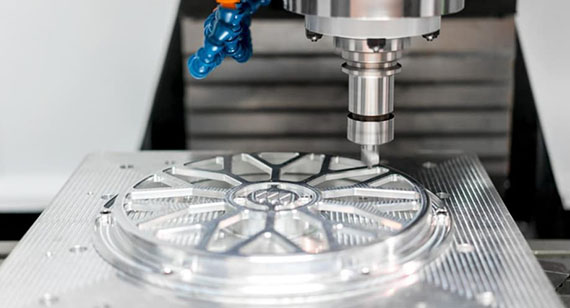
Conventional tooling, on the other hand, refers to the conventional methods of manufacturing molds and tooling components, such as die casting, injection molding, or stamping. It is often associated with longer lead times, higher costs, and precise, long-term production. While conventional tooling excels in high-volume manufacturing, it lacks the speed and flexibility of rapid tooling when it comes to prototyping and smaller production runs.
The process typically involves more substantial investments upfront, with tooling made from hardened materials for high durability. Conventional tooling is preferred when a high degree of accuracy and surface finish is required, and when the production volume justifies the investment.
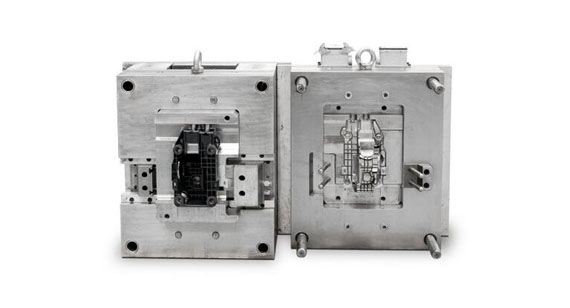
Historically, tool making was a labor-intensive process involving manual machining and casting, which was time-consuming and costly. With the advent of CNC machining in the late 20th century, manufacturers began using computer-controlled machines to create more precise tools faster and more efficiently. In the 21st century, 3D printing and additive manufacturing have revolutionized rapid tooling, allowing designers to create molds and prototypes almost instantaneously.
Conventional tooling methods, although still in use, have not evolved as rapidly in terms of speed and flexibility. However, they remain essential for high-precision work in industries such as aerospace, automotive, and medical device manufacturing.
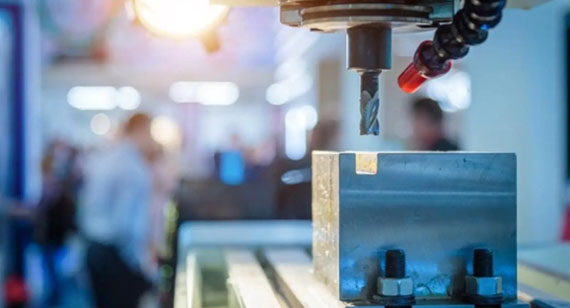
| Aspect |
Rapid Tooling |
Conventional Tooling |
| Definition | Fast creation of molds using 3D printing or CNC machining | Conventional molds made from hardened metals through casting, stamping, or injection molding |
| Cost | Lower, especially for prototypes or short runs | Higher, due to extensive labor, tooling, and material costs |
| Speed | Faster production, especially for low-volume runs | Longer lead times, especially for high-precision molds |
| Customization | High flexibility for design changes and iterations | Limited flexibility once tooling is made |
| Quality | Sufficient for prototypes and short runs, but may lack long-term durability | Superior quality for high-volume production with excellent surface finishes |
| Accuracy | Suitable for prototypes and low-volume runs; may lack long-term precision | High precision, ideal for mass production and high-accuracy parts |
| Material Selection | Limited material options for 3D printing and rapid prototyping | Wide range of materials for long-term, high-strength use |
| Applicable Project Phases | Prototyping, short-run, and testing | High-volume, mass production |
| Types of Manufacturing Methods | 3D printing, CNC machining | Die casting, injection molding, stamping, casting |
Cost Savings
One of the most significant advantages of rapid tooling is its ability to reduce costs, especially for small production runs or prototypes. Conventional tooling involves high initial investment costs for mold creation and the need for expensive materials. In contrast, rapid tooling uses faster, more affordable methods like CNC machining and 3D printing to produce tooling components with fewer upfront costs.
Quick Turnaround
With rapid tooling, manufacturers can significantly reduce the time it takes to produce tools. This is ideal for industries where quick design iterations and faster product releases are crucial. For instance, CNC prototype machining allows for the rapid creation of custom tooling parts, making it easier to test designs before full-scale production.
Flexibility
Rapid tooling offers flexibility in design changes, which can be made even after the tooling has started production. This is especially useful when prototyping or experimenting with different materials and designs. Conventional tooling methods, on the other hand, require extensive retooling if design modifications are needed.
Customization
The use of rapid prototyping techniques enables custom, on-demand tooling for various applications, from small batch runs to specific part designs. The ability to adapt tooling quickly for specialized needs sets rapid tooling apart from conventional methods.
Multiple Material Options
Rapid tooling allows the use of a wide variety of materials for prototypes or short runs, especially when using CNC machining or 3D printing technologies. This flexibility is beneficial when testing different materials for their performance before committing to mass production.
Disadvantages of Rapid Tooling
Non-uniformity and Consistency
While rapid tooling is ideal for prototypes or short-run production, it may not deliver the same level of uniformity and consistency as conventional tooling methods, which are engineered for long-term, high-volume production.
Unsuitable for Mass Production
Due to the nature of rapid prototyping and the materials used, rapid tooling is not well-suited for large-scale production runs, where conventional tooling is more cost-effective and precise.
Rising Labor Costs
As rapid tooling becomes more complex, labor costs can increase. Some advanced methods of CNC machining or 3D printing may require specialized knowledge, leading to higher operational costs.
Advantages of Conventional Tooling
Long-standing Use in Manufacturing
Conventional tooling has been a mainstay in the manufacturing industry for decades, proving its reliability and effectiveness in large-scale production. Techniques such as die casting, injection molding, and stamping have been refined over years of use, providing manufacturers with the assurance of a time-tested process. This long history means conventional tooling is trusted for high-volume production, especially in industries that require long-term, consistent output. Its proven track record in producing millions of parts with minimal variation has cemented its place in many high-precision manufacturing sectors.
Precision and Excellent Surface Finish
One of the primary benefits of conventional tooling is its ability to produce parts with high precision and excellent surface finishes. The manufacturing processes involved are optimized for creating intricate and accurate molds that deliver parts meeting stringent tolerances. This precision is particularly important in industries like aerospace, automotive, and medical device manufacturing, where part accuracy is critical. Conventional tooling methods also allow for high-quality finishes, ensuring that components not only fit together well but also meet aesthetic standards for end-user products.
Multiple Material Options
Conventional tooling supports a broad spectrum of materials, including metals, plastics, and composites. With methods like injection molding and die casting, manufacturers can use materials that offer specific properties such as strength, heat resistance, or durability. This versatility in material selection is advantageous for industries that require specific material characteristics, whether for functionality or regulatory compliance. From high-strength alloys to heat-resistant plastics, conventional tooling accommodates a wide variety of manufacturing needs, allowing companies to produce parts suited to specific applications.
Consistency
Another key advantage of conventional tooling is the ability to produce consistent, high-quality parts over long production runs. Once a mold or tool is created, it can be used to replicate the same part thousands or even millions of times without significant variation. This consistency is essential in industries where mass production is the norm, and it ensures that each product meets the exact specifications needed for assembly or use. The longevity and durability of conventional tooling also contribute to the consistency of production, maintaining tight tolerances and high-quality standards throughout a long manufacturing cycle.
Disadvantages of Conventional Tooling
High Cost
The most significant disadvantage of conventional tooling is the high initial cost. Developing molds and tooling for production involves extensive design work, material costs, and sometimes the need for custom fabrication. This makes the upfront investment much higher than that required for rapid tooling methods like CNC prototyping or 3D printing. For small to medium production runs, the initial costs of conventional tooling may not be justified, particularly when rapid tooling can offer a more cost-effective solution for quick-turnaround projects.
Long Lead Times
Conventional tooling methods often require longer lead times, particularly when creating molds and tooling from scratch. Depending on the complexity of the part and the tooling process, this can take weeks or even months. This extended lead time can be a disadvantage in industries where time-to-market is critical or when design changes need to be implemented quickly. Unlike rapid tooling, which can be adjusted and iterated quickly, conventional tooling often requires significant downtime for mold alterations or updates.
Poorly Adaptable Designs
Once a conventional mold is created, making adjustments or design changes can be difficult and expensive. In fast-evolving industries where design tweaks are common, this lack of flexibility can lead to delays and added costs. Modifying a mold typically involves machining, retooling, or even creating an entirely new set of tools. This makes conventional tooling less suitable for projects where design iterations are frequent, or where rapid prototyping and testing are required.
Excessive Material Waste
Conventional tooling processes, especially in casting and stamping, often result in substantial material waste. In many cases, the material is over-engineered for strength or durability, leading to more raw material being used than necessary. Additionally, processes like die casting may involve excess material that needs to be trimmed away after production. This waste not only increases material costs but also has environmental impacts, making conventional tooling less sustainable compared to more resource-efficient techniques like rapid tooling.
Challenging for Small to Medium Production Runs
Conventional tooling is best suited for large-scale production runs, where the cost of creating the tools is amortized over thousands or millions of units. For small to medium production runs, the initial investment in tooling and the time required to create the tools may not be economically feasible. Rapid tooling methods provide a more suitable alternative in such cases, offering faster turnaround and lower costs for smaller quantities.
Key Differences Between Rapid Tooling and Conventional Tooling
The landscape of manufacturing has been evolving rapidly, especially with the advent of rapid tooling and its ability to streamline processes. On the other hand, conventional tooling continues to serve as the backbone for industries with mass production needs. Understanding the differences between these two methods is crucial for manufacturers, designers, and engineers who need to make informed decisions based on production requirements, budget constraints, and product specifications. Let’s explore the key distinctions in terms of production timeline, economic considerations, adaptability, product integrity, material variety, and the overall nature of modern versus conventional manufacturing methods.

Production Timeline: Speed vs. Accuracy
One of the most significant differences between rapid tooling and conventional tooling is the production timeline. Rapid tooling is designed for speed. With modern technologies like CNC prototyping and 3D printing, manufacturers can create tools and prototypes in a fraction of the time required by conventional methods. This is particularly beneficial for industries needing quick design validation and shorter time-to-market.
In contrast, conventional tooling prioritizes accuracy and precision over speed. The process involves detailed design work, tool fabrication, and testing, which can take weeks or even months. Conventional tooling is ideal for projects where high-volume, consistent production is key, but it lacks the ability to adapt quickly to design changes. Rapid tooling shines when time is a critical factor, while conventional tooling excels in high-precision, long-term, and high-volume manufacturing.
Economic Considerations: Initial Outlay vs. Long Production Investment
When comparing economic considerations, rapid tooling and conventional tooling take opposite approaches. Rapid tooling typically requires a lower initial investment. Methods like 3D printing or CNC machining often eliminate the need for expensive molds and tools, making it a cost-effective choice for short-run or prototyping projects. This allows manufacturers to quickly adapt to design changes without incurring large upfront costs. However, it may not be cost-efficient for high-volume production due to its relatively higher per-unit production cost.
In contrast, conventional tooling requires significant upfront investment in the creation of molds, dies, and machines. While this initial cost can be high, the long-term benefits become apparent with mass production. As the production scale increases, the cost per unit drops significantly, making conventional tooling more cost-effective for high-volume production runs. This economic model is best suited for industries where large quantities of identical parts are required.
Adaptability: From Fluid Design to Fixed Tooling
Adaptability is a major differentiator between rapid tooling and conventional tooling. With rapid tooling, manufacturers can make quick changes to the design of the tool or part. This is essential in industries like automotive or aerospace, where product designs are constantly evolving, and prototypes are tested frequently. Rapid tooling methods like 3D printing allow for fluid design iterations, enabling companies to experiment with various iterations without committing to expensive, fixed tooling.
On the other hand, conventional tooling is more rigid. Once a mold is created, it is challenging and expensive to modify. This lack of flexibility makes conventional tooling less ideal for industries or projects where designs frequently change, or quick adjustments are needed. If adaptability is a priority, rapid tooling offers the clear advantage by offering a more responsive and iterative approach to manufacturing.
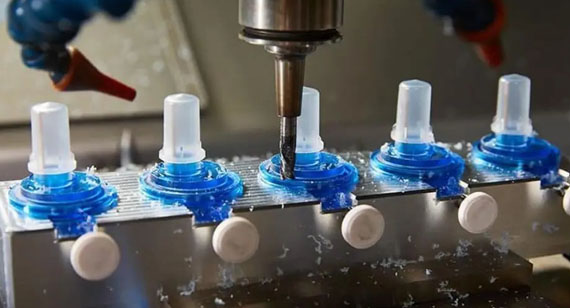
Product Integrity: Excellence vs. Consistency
In terms of product integrity, conventional tooling has a clear advantage, especially for high-volume production. Once the tool or mold is created, it is highly durable and capable of producing thousands or even millions of parts with minimal variation. Conventional tooling is ideal for applications where consistency, precision, and durability are non-negotiable. This is particularly crucial in industries such as medical device manufacturing, automotive parts, and aerospace.
Rapid tooling, on the other hand, prioritizes flexibility and speed. While rapid tooling methods are excellent for prototyping and small-batch production, they may not consistently offer the same level of durability or precision as conventional tooling. The materials used in rapid tooling may be more prone to wear and tear, and the resulting parts may not always meet the stringent quality standards required for mass production.
Material Variety: Innovation vs. Tradition
Material selection is another area where rapid tooling and conventional tooling differ. Rapid tooling offers greater flexibility when it comes to experimenting with new materials. 3D printing and CNC machining allow manufacturers to test a wide range of materials quickly, which is especially useful in the prototyping phase where the focus is on material innovation and testing for functionality, durability, and other performance characteristics. Rapid tooling also accommodates complex geometries that conventional methods might struggle to achieve with certain materials.
On the other hand, conventional tooling has a broader selection of proven materials, many of which have been used for decades. These materials are tested for durability, strength, and reliability over large-scale production runs. However, conventional tooling can be less adaptable when it comes to new material experimentation, and some modern materials may not be compatible with conventional tooling methods without substantial modification to the tooling itself.
Modern vs. Conventional Manufacturing Methods
The difference between modern and conventional manufacturing methods is embodied in the contrast between rapid tooling and conventional tooling. Rapid tooling is a modern, digital-first approach that leverages technologies such as CNC machining, 3D printing, and additive manufacturing to create prototypes, tools, and even low-volume production parts. These methods are faster, more flexible, and are ideal for short-run production and iterative design processes.
Conventional tooling, however, is part of the tried-and-true manufacturing techniques that rely on mechanical processes like injection molding, die casting, and stamping. These methods are time-tested and proven for high-volume, high-precision production. While conventional tooling may not be as agile as rapid tooling, it remains essential for industries where production volume, material strength, and longevity are of utmost importance.
In the modern manufacturing world, rapid tooling has revolutionized how products are developed and brought to market. It offers distinct advantages over conventional tooling, particularly when it comes to speed, flexibility, and cost efficiency. While conventional tooling has been the go-to for mass production due to its high accuracy and precision, rapid tooling is increasingly becoming the preferred choice for projects that require quick turnarounds, adaptability, and cost-effectiveness, particularly in the short-run production and prototyping phases. In this section, we will explore why rapid tooling is better than conventional tooling in various critical aspects.
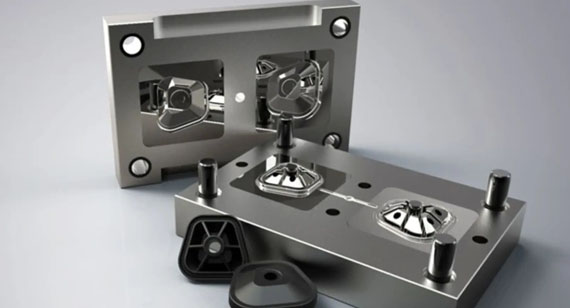
Quick Turnaround
One of the key reasons rapid tooling outperforms conventional tooling is its quick turnaround time. Conventional tooling often involves the creation of molds and dies that can take weeks or even months to design, fabricate, and test. In contrast, rapid tooling leverages advanced technologies such as CNC machining and 3D printing to produce tooling components and prototypes much faster. With rapid tooling, manufacturers can quickly validate designs, produce prototypes, and make the necessary adjustments without waiting long periods, ultimately shortening the overall product development cycle. This speed is essential for industries like automotive and aerospace, where getting products to market quickly can provide a competitive edge.
Adapting to Design Changes
Another significant advantage of rapid tooling is its ability to adapt to design changes with minimal cost and effort. In conventional tooling, once a mold or tool is created, making modifications can be expensive and time-consuming. Design changes often require the creation of entirely new tools or molds, leading to costly delays in the production process.
With rapid tooling, the flexibility to modify designs is inherent. Since the process typically involves digital technologies, like CNC machining or 3D printing, design adjustments can be made quickly and cost-effectively. Manufacturers can change geometries, materials, and features without needing to create new tooling from scratch. This is especially beneficial in industries where products undergo frequent design iterations or require customization to meet client specifications.
Economical and Efficient Short-Run Production and Prototyping
Rapid tooling is particularly economical and efficient for short-run production and prototyping. In conventional tooling, the high initial investment required for creating molds and tools is only justified when producing large quantities of parts. However, in rapid tooling, the ability to produce low-volume parts at a fraction of the cost is a game-changer. Since there are no hefty tooling costs associated with each production run, rapid tooling is ideal for industries that require small quantities of parts for testing, validation, or limited production runs.
Moreover, rapid tooling allows manufacturers to produce functional prototypes that can be tested and refined before mass production. This eliminates the risk of producing large quantities of defective parts and minimizes material waste. For example, CNC prototype machining allows for creating precise, functional prototypes that can be tested for form, fit, and function before moving forward with expensive, large-scale production.
Simpler Manufacturing Process
The manufacturing process in rapid tooling is inherently simpler than that of conventional methods. Conventional tooling typically involves the creation of intricate molds, dies, and machines, which are resource-intensive and require highly skilled labor. Once the tools are created, a lengthy setup process follows to ensure that the production process runs smoothly.
In contrast, rapid tooling uses digital fabrication methods, such as 3D printing and CNC machining, which streamline the entire process. With rapid tooling, there is less reliance on complex machinery, and the design-to-production workflow is more direct. The simplicity of the process reduces the risk of errors, lowers labor costs, and allows for a more flexible and agile production environment.
Versatility
Lastly, rapid tooling offers a level of versatility that conventional tooling simply cannot match. Rapid tooling methods, such as CNC machining and 3D printing, can work with a wide range of materials, including plastics, metals, and composites, allowing manufacturers to experiment with different material properties and geometries. These methods also enable the creation of complex geometries and intricate designs that may be difficult or impossible to achieve with conventional tooling methods.
Furthermore, rapid tooling is highly adaptable to a variety of industries. Whether it's for automotive prototyping, medical device manufacturing, or aerospace part production, rapid tooling offers unparalleled versatility in meeting the specific needs of different sectors. Whether you need a quick prototype, a small batch of parts, or an intricate custom tool, rapid tooling provides the flexibility to accommodate a wide range of production demands.
In conclusion, rapid tooling offers several key advantages over conventional tooling, especially in terms of speed, adaptability, cost-effectiveness, and versatility. As industries continue to push for faster, more efficient manufacturing processes, rapid tooling is poised to play a crucial role in the future of product development and production. Whether you’re looking to create prototypes, test new designs, or produce short runs of custom parts, rapid tooling can provide the solution you need.
Choosing the right tooling method for a project is crucial to ensure efficiency, cost-effectiveness, and the ability to meet production goals. Whether you're in the prototyping phase, preparing for short-run production, or dealing with highly specialized industries, the decision between rapid tooling and conventional tooling can greatly impact your project. Rapid tooling is ideal for some applications, offering quick turnaround times and flexibility, while conventional tooling remains the go-to option for high-volume, precision-focused manufacturing. This section will guide you through when to choose rapid tooling for your specific needs, with real-world examples from key industries.
When to Use Rapid Tooling
Rapid tooling shines in situations where speed, cost-efficiency, and design flexibility are essential. Here are a few scenarios where rapid tooling provides the most value:
Prototyping Phase
During the prototyping phase, rapid tooling is particularly beneficial because it allows for the fast creation of functional prototypes. Designers and engineers can quickly create and test prototypes to assess form, fit, and functionality before moving forward with full-scale production. The ability to make design changes rapidly without incurring significant additional costs or delays allows for faster iterations and fine-tuning. This can help manufacturers get valuable feedback early in the design process, reducing the risk of costly mistakes later on.
For example, in the automotive industry, rapid tooling enables engineers to test new car parts, such as complex engine components or exterior panels, at a fraction of the time and cost that conventional tooling would require.
Short-Run Production
For short-run production or limited production runs, rapid tooling is the most practical and cost-effective solution. Conventional tooling involves high upfront costs for mold creation and setup, which is only justifiable when producing large quantities of parts. However, in short-run production, these costs can be prohibitive.
With rapid tooling, you can manufacture small batches of custom or prototype parts quickly and efficiently. This makes it perfect for industries where smaller quantities are required for testing or where products change rapidly. For instance, aerospace manufacturers often need to create limited batches of aircraft components for initial testing or certifications. Rapid tooling allows them to meet production deadlines without investing in expensive, long-lead-time tooling.
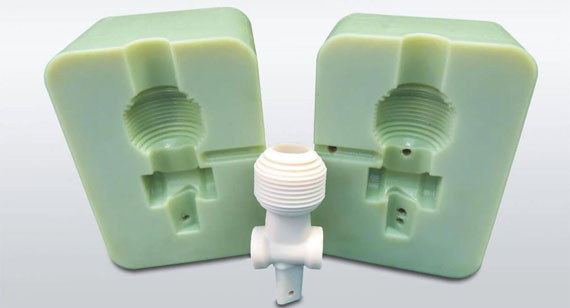
Specific Industries and Examples
Automotive Design and Prototyping
The automotive industry is one of the key sectors where rapid tooling offers significant advantages. Rapid tooling methods, like CNC prototyping and 3D printing, are used extensively to produce quick prototypes of car parts and assemblies. For instance, manufacturers can use rapid tooling to create functional models of complex car interior components, engine parts, or exterior body panels.
This technology allows manufacturers to quickly iterate and test prototypes, ensuring that components fit and function properly before full-scale production begins. With rapid tooling, automotive companies can significantly reduce development time, which is critical when launching new vehicle models.
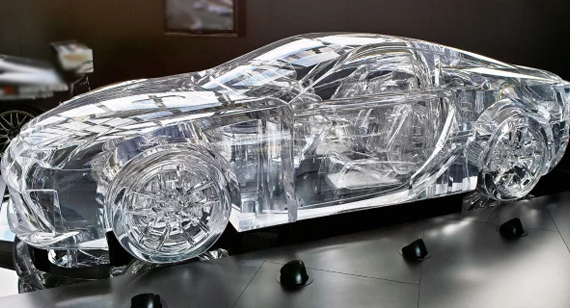
Aerospace Manufacturing
In aerospace manufacturing, rapid tooling is used to create prototype parts and molds for aircraft components. The ability to quickly test new designs and adjust components before committing to mass production is crucial in this high-precision, safety-focused industry. Aerospace manufacturers often need to evaluate performance under extreme conditions, and rapid tooling allows for fast prototyping of parts like brackets, fittings, and other components.
Aerospace projects frequently involve specialized materials, such as high-performance alloys or composites, which can be challenging to work with using conventional tooling. Rapid tooling offers a more flexible approach, enabling the use of a wider variety of materials and more intricate designs, which is particularly useful when testing new, lighter, or more durable materials.
The medical device industry is another sector where rapid tooling proves invaluable. The process of creating prototypes for medical devices often involves highly specialized, complex designs that need to be validated quickly. Whether it's a surgical tool, prosthetic component, or implantable device, rapid tooling allows manufacturers to quickly produce parts for functional testing and design validation.
For instance, in the development of new orthopedic implants, rapid tooling can be used to create customized parts that fit a patient’s unique anatomical requirements. This approach speeds up the process of prototype testing and FDA approval, helping to bring life-saving devices to market faster.
Moreover, the use of biocompatible materials in medical device prototyping requires a careful balance between design, functionality, and safety, which rapid tooling allows manufacturers to test and refine effectively.
Conclusion
In summary, choosing between rapid tooling and conventional tooling depends on your project’s specific needs. If you're in the prototyping phase, need short-run production, or are working in industries like automotive design, aerospace manufacturing, or medical device prototyping, rapid tooling offers a fast, cost-effective, and flexible solution. It allows for quick iteration, reduced lead times, and efficient production without the hefty upfront costs associated with conventional tooling. Whether you’re testing new designs, materials, or concepts, rapid tooling provides the tools you need to move your project from idea to prototype and beyond.
When to Use Conventional Tools
While rapid tooling is ideal for short-run and prototype production, conventional tooling remains a staple in manufacturing when high-volume production, precision, and durability are paramount. In industries where large quantities of parts are needed, or where product integrity and consistency are essential, conventional tooling is the go-to method. This section will explore the scenarios in which conventional tooling excels, focusing on volume production, the need for high durability and high precision, and providing examples from various industries.
Volume Production
One of the primary advantages of conventional tooling is its ability to handle high-volume production runs. When large quantities of identical parts are required, conventional tooling proves to be more cost-effective than rapid tooling. This is because, despite the high initial cost and longer setup times, conventional tooling benefits from significantly reduced per-part production costs once the tools are established.
For instance, in industries like automotive manufacturing, where thousands or even millions of parts are produced over the lifetime of a model, conventional tooling is indispensable. The process ensures that each part produced is consistent, durable, and up to specification, making it the preferred option for mass production. The molds and tools used in conventional tooling are designed to withstand the wear and tear of high-volume production, ensuring that manufacturing lines can run smoothly for extended periods with minimal downtime.
When High Durability and High Precision Are Required
Conventional tooling excels in situations where high durability and high precision are critical. The materials used for conventional tooling, such as hardened steels and other robust alloys, are specifically chosen for their ability to withstand the extreme stresses and wear of mass production. This makes it ideal for parts that require precision and are subjected to intense mechanical forces over time.
For example, in the aerospace industry, parts like turbine blades, engine components, and structural elements must meet extremely high standards for precision and durability. Any deviation from specifications could result in catastrophic failures, so manufacturers rely on the consistency and strength that conventional tooling provides. In this industry, conventional tooling is used to create parts that not only meet rigorous design standards but also withstand harsh conditions in flight.
Similarly, in medical device manufacturing, where the integrity and safety of the product are of utmost importance, conventional tooling ensures the creation of high-precision surgical instruments and implants that meet the strictest regulatory standards. The durability of these tools ensures long-lasting performance, making them essential for devices that must perform flawlessly in life-saving applications.
Specific Industries and Examples
In the automotive industry, conventional tooling plays a critical role in the mass production of components such as engine parts, body panels, and safety features. The automotive sector requires tooling that can produce large volumes of components with tight tolerances to ensure quality and consistency across all parts. For instance, stamped body panels, molded interior components, and engine block parts are all produced using conventional tooling methods to maintain uniformity and meet safety standards.
Since the automotive industry focuses on high-volume production, conventional tooling is essential for meeting these demands at scale. The initial investment in tooling may be significant, but the per-part cost decreases as production volume increases, making it the most cost-effective option for large manufacturing runs.
Aerospace Industry
In the aerospace industry, components are subject to extremely high safety standards, which necessitate precise and durable tooling for production. Parts such as aircraft wings, engine components, and landing gear must be manufactured to exact specifications to ensure both performance and safety. Conventional tooling is typically used in the production of these critical components, as the process can deliver the precision and durability required for such high-stakes applications.
The aerospace industry often produces parts in large quantities for different models, making conventional tooling an efficient option. The process is optimized for producing consistent, high-quality parts that can meet the stringent demands of the industry.
In the medical device manufacturing industry, conventional tooling is used to produce highly precise parts that are often critical to patient health and safety. For example, surgical tools, implants, and prosthetics require manufacturing processes that ensure both high precision and durability. The reliability of conventional tooling is essential in ensuring that each product is identical, performs as expected, and meets regulatory standards.
For example, conventional tooling methods are often employed to produce high-volume parts such as orthopedic implants and dental devices, where precision is a critical factor. The ability of conventional tooling to produce these parts consistently and accurately makes it a reliable choice for the medical industry.
In the consumer electronics industry, conventional tooling is used to create parts for products like smartphones, laptops, and televisions, which require both high durability and precision. The tooling used for these applications often needs to handle both small and large components and be adaptable to rapid changes in design as the market demands new features or aesthetics.
For instance, the plastic casing of electronic devices must be produced in high volumes, with tight tolerances to fit components like screens and circuit boards perfectly. Conventional tooling provides the precision required to produce these parts consistently, ensuring that products meet both performance standards and consumer expectations.
Conclusion
Conventional tooling remains the ideal choice for industries that require high-volume production, precision, and durability. Whether you're working in automotive manufacturing, aerospace, medical device production, or consumer electronics, conventional tooling offers a time-tested, reliable solution for mass production. The ability to create durable molds and tools that can handle the wear and tear of high-volume production ensures that these industries continue to rely on conventional tooling for their most critical applications. When the focus is on precision, consistency, and high durability, conventional tooling remains unmatched.
This guide explores the fundamental differences between rapid tooling and conventional tooling, helping manufacturers decide the best approach for their production needs. Rapid tooling is a modern technique that offers quick turnaround times and flexibility for prototyping and short-run production. It's ideal for projects requiring fast development, iterative design changes, and lower upfront investment. However, it may not be suitable for mass production due to concerns like material durability and consistency.
In contrast, conventional tooling has been the backbone of manufacturing for years, especially for high-volume production runs. It is highly precise, durable, and consistent, making it the go-to method for industries where product integrity and consistency are crucial. While it requires a higher initial investment and longer setup times, the long-term cost-effectiveness and precision make it ideal for mass production, particularly in industries like automotive, aerospace, and medical device manufacturing.
The guide also covers the key advantages and disadvantages of both methods. Rapid tooling shines in terms of cost savings, speed, and the ability to handle multiple materials. However, it is less suitable for long-term, high-precision, and mass production applications. Conventional tooling, on the other hand, excels in durability, precision, and consistency, but comes with higher initial costs and longer lead times.
The choice between the two ultimately depends on the production timeline, economic considerations, adaptability to design changes, and application needs. In real-world applications, rapid tooling is ideal for prototyping, small production runs, and industries like automotive design, aerospace manufacturing, and medical device prototyping. Conventional tooling is better suited for large-scale production, high durability needs, and precision-critical applications like those in the automotive, aerospace, and consumer electronics industries.
In conclusion, manufacturers must consider factors like production volume, design complexity, material requirements, and cost to determine the right tooling method for their specific projects. Both rapid tooling and conventional tooling have their place in modern manufacturing, and understanding their strengths and limitations can help optimize the production process.
Frequently Asked Questions
1. What is the difference between conventional machining and rapid prototyping?
Conventional machining involves processes like milling, turning, and drilling, which are used to create precise, durable parts, often in large quantities. Rapid prototyping, on the other hand, focuses on quickly producing a prototype or model for testing or design iteration, typically using methods like 3D printing, and is more suited for quick turnaround, not high-volume production.
2. What is rapid tooling?
Rapid tooling is the process of creating tool molds quickly for prototypes or low-volume production. It uses modern techniques like 3D printing or CNC machining to produce tools faster than conventional methods, enabling quick turnaround times and flexibility in design changes, especially for short-run manufacturing.
3. What are the different types of tools?
The main types of tools in manufacturing include cutting tools (like drills, mills, lathes), measuring tools (calipers, micrometers), and forming tools (molds, dies). Tools can also be categorized based on the process they’re used for, such as hand tools, power tools, and machine tools.
4. What are the two main types of tools?
The two main types of tools are cutting tools, which are used to remove material from a workpiece, and forming tools, which are used to shape the workpiece into its desired form, such as molds or dies.
5. What is the difference between hard and soft tools?
Hard tools are typically made from high-strength materials like steel or carbide and are used for durable, long-lasting production runs. Soft tools, often made of lower-strength materials or softer metals, are used in rapid tooling for shorter production runs or prototypes. Soft tools are less durable but faster and cheaper to produce.
6. What is the difference between B tools and D tools?
B tools are tools used for basic or secondary operations such as drilling or tapping. D tools are generally used for more advanced or detailed processes, such as precision finishing or complex shaping. The primary difference lies in the complexity of the operation.
7. What is the difference between staged and progressive tools?
Staged tools perform operations step by step in a sequence (for example, in stages of a forming or cutting process). Progressive tools, on the other hand, perform multiple operations at once in a continuous process. The difference is mainly in the way the tool processes the material, either sequentially or simultaneously.
8. Do softer tools cut faster than harder tools?
Softer tools generally cut faster because they require less force to deform the material. However, they may wear out more quickly and are typically not suitable for harder materials or long production runs. Harder tools, while slower, provide more durability and precision in cutting.
9. Which tool material has the highest cutting speed?
Carbide is known for having the highest cutting speed. It is extremely hard and retains its cutting edge at high temperatures, making it ideal for high-speed cutting in applications like CNC machining.
10. What factors affect cutting speed?
Several factors affect cutting speed, including the material of the workpiece, the material of the cutting tool, the type of cutting operation, machine rigidity, feed rate, and the temperature generated during the cutting process. Cutting speed is optimized by balancing these variables to ensure efficiency and tool longevity.
11. What is the formula for RPM in machining?
The formula for calculating RPM (Revolutions Per Minute) is:

Where:
This formula helps determine the optimal speed at which a tool should rotate to achieve the best cutting performance.
12. What is a D-type tool?
A D-type tool refers to a type of cutting tool or insert with a "D" shaped profile, often used in turning operations. These tools are typically designed to improve material removal rates while providing a stable cutting edge.
13. What is the difference between an upper punch and a lower punch?
Upper punches are used in the upper die section of a tool to apply force to the workpiece, while lower punches are in the bottom section, receiving the impact force. The difference lies in their placement and role within the tool, whether they are pushing or receiving the force.
14. What is the difference between a prototype tool and a production tool?
Prototype tools are used for initial testing and design verification of parts, usually with less durability and strength. Production tools are designed for full-scale manufacturing and are built to handle larger volumes and more demanding environments, with a focus on durability and precision.
15. What is a high-speed tool?
A high-speed tool refers to a cutting tool that operates at faster speeds than standard tools. High-speed tools are usually made from materials like high-speed steel (HSS) or carbide, designed to withstand the heat generated during rapid cutting processes.
16. What is the hardest cutting tool?
The hardest cutting tools are typically made from materials like diamond or cubic boron nitride (CBN). These materials are used for cutting extremely hard metals and can maintain sharpness even under high temperatures.
17. What is the cutting speed of CNC?
The cutting speed in CNC machining varies depending on the material being processed, the tool material, and the type of machining operation. Typically, cutting speeds range from 100 to 500 meters per minute for metals, but specific conditions like material hardness, tool material, and operation type will influence this figure.
This FAQ section aims to address some common queries regarding tooling in manufacturing. Understanding these concepts is essential for choosing the right tools and processes for specific projects, whether they involve rapid tooling, CNC machining, or conventional tooling methods.
